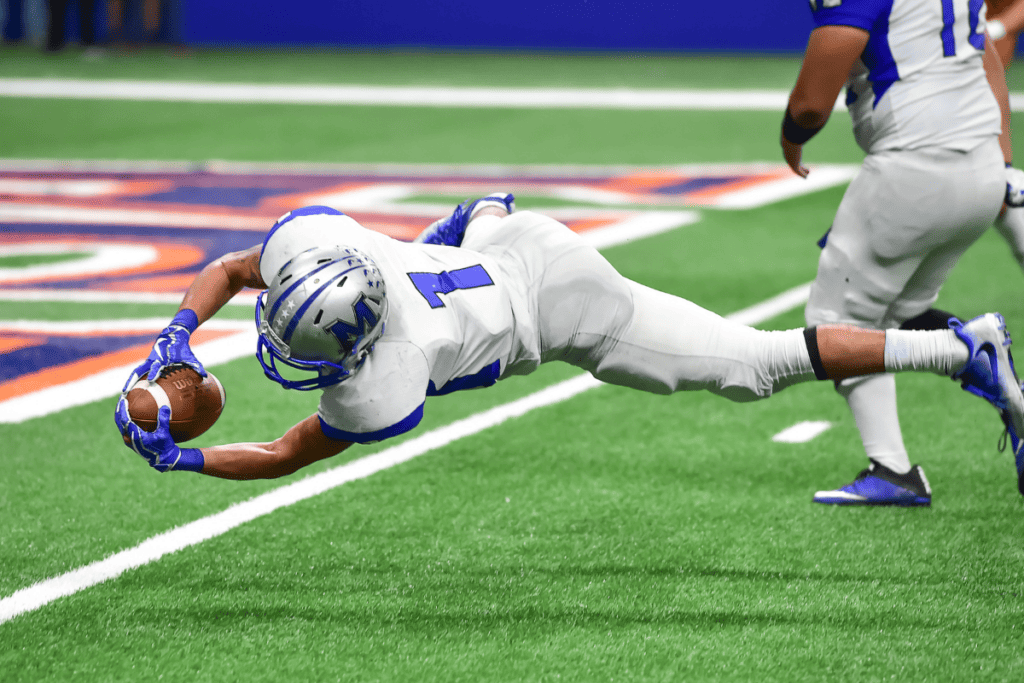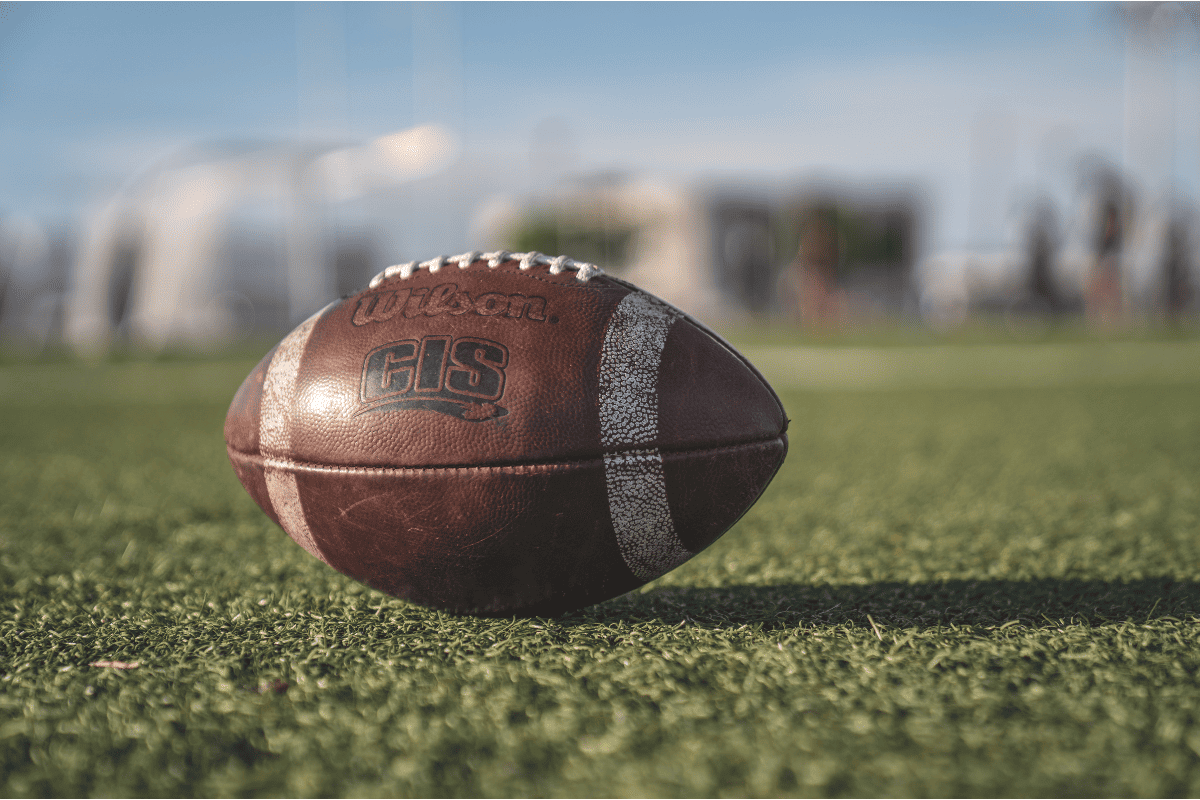38 Football Abbreviations (and their meanings)
Football, rich in jargon and abbreviations, can be both intriguing and bewildering, especially to those new to the sport. From QBs masterfully leading their teams to LBs guarding the defensive fort, each abbreviation carries its own meaning and strategy.
To fully appreciate the beauty of football, one must understand these abbreviations. They are the shorthand that coaches, players, and commentators use to capture the fast-paced action on the field. For a new fan, deciphering these terms can be the key to unlocking a deeper enjoyment of the game.
In this guide, we’ll dive into the most common and essential football abbreviations. We’ll explore offensive and defensive positions, shedding light on the roles and responsibilities of each player on the field. We’ll also break down key gameplay and strategic terms that frequently pop up during games and analyses. By the end of this journey, you’ll be fluent in football’s unique language.
Offensive Position Abbreviations

1. QB (Quarterback)
- The Quarterback is the central figure in the offense, responsible for leading the team’s attack. They call plays, throw passes, and occasionally run with the ball.
2. RB (Running Back)
- The Running Back takes the handoff from the QB and executes running plays. They are pivotal in advancing the ball on the ground, weaving through defensive lines.
3. FB (Fullback)
- Fullbacks are versatile players performing a mix of blocking, running, and occasionally receiving. They often lead the way for the running back or protect the quarterback.
4. WR (Wide Receiver)
- Wide Receivers are the main targets for passes from the QB. They specialize in catching the ball and gaining significant yardage after the catch.
5. TE (Tight End)
- Tight Ends serve as a hybrid between a receiver and an offensive lineman. They line up near the offensive line and can be used both for blocking and as a receiving option.
6. OL (Offensive Line)
- The Offensive Line consists of five players who protect the QB and block for the running game. The line includes the LT (Left Tackle), LG (Left Guard), C (Center), RG (Right Guard), and RT (Right Tackle), each with specific responsibilities in protection and blocking.
7. H-Back
- A hybrid role, the H-Back combines elements of a tight end and fullback. They are used variably in offensive schemes for both blocking and receiving, often in motion before the snap.
8. ATH (Athlete)
- In football terminology, ‘Athlete’ (ATH) is a designation used primarily in recruiting and college football to describe a player who can play multiple positions. Players labeled as ATH are versatile and can be slotted into various roles depending on the team’s needs, making them valuable for their adaptability.
Defensive Position Abbreviations

1. DT (Defensive Tackle)
- The Defensive Tackle plays in the center of the defensive line. Their primary job is to stop the run and put pressure on the quarterback, often dealing with multiple blockers.
2. DE (Defensive End)
- Positioned at the outer edges of the defensive line, Defensive Ends focus on rushing the quarterback and tackling runners. They play a critical role in both pass and run defense.
3. LB (Linebacker)
- Linebackers operate behind the defensive line and are involved in both tackling runners and defending against passes. They are key in reading the offense’s plays and reacting quickly.
4. CB (Cornerback)
- Cornerbacks primarily cover wide receivers and defend against pass plays. They play on the edges of the defensive formation and are crucial in pass defense.
5. S (Safety)
- Safeties are the last line of defense, playing deep in the field. They are split into FS (Free Safety), who focuses more on pass coverage, and SS (Strong Safety), who is often more involved in run defense and blitzes.
6. NT (Nose Tackle)
- In certain defensive alignments, particularly the 3-4 defense, the Nose Tackle lines up directly opposite the offensive center. They are primarily responsible for stopping the run and occupying blockers.
7. EDGE
- This is a term used to describe players who specialize in pressuring the quarterback, typically a Defensive End or an Outside Linebacker in certain schemes. Their main goal is to disrupt the backfield and create pressure on passing downs.
Gameplay and Strategy Abbreviations (Revised)

1. TD (Touchdown)
- A Touchdown, scoring six points, is achieved when the ball is carried into or caught in the opponent’s end zone.
2. FG (Field Goal)
- A Field Goal, worth three points, is scored by kicking the ball through the opponent’s goalposts, typically on fourth down if a touchdown seems unlikely.
3. PAT (Point After Touchdown)
- The PAT is an extra point attempt following a touchdown, either a one-point placekick or a two-point conversion from the two-yard line.
4. XP (Extra Point)
- Another term for PAT. Extra Point refers to the attempt to score one additional point by kicking the ball through the goalposts immediately after a touchdown.
5. INT (Interception)
- An Interception is a turnover occurring when a defensive player catches a pass intended for the offensive team, changing possession of the ball.
6. YDS (Yards)
- Yards are the basic unit of measurement in football. YDS is used to indicate the distance gained or lost on a play, or the cumulative yardage of a player or team.
7. TFL (Tackles For Loss)
- Tackles For Loss are recorded when a defensive player tackles the offensive player behind the line of scrimmage, resulting in a loss of yards.
8. PPR (Points Per Reception)
- Commonly used in fantasy football, Points Per Reception is a scoring system where players receive points for each reception they make.
9. KR (Kick Returner) / PR (Punt Returner)
- These positions are responsible for returning kickoffs and punts, respectively. They play a crucial role in determining the starting field position after these plays.
10. DPI (Defensive Pass Interference) / OPI (Offensive Pass Interference)
- DPI and OPI are penalties called against players for illegal contact that impedes a pass’s fair completion, with DPI against the defense and OPI against the offense.
Conclusion
As we reach the end zone of our guide on football abbreviations, it’s evident that the language of football is as dynamic and intricate as the game itself. From QBs orchestrating masterful plays to WRs sprinting for a crucial TD, every term and abbreviation adds depth and clarity to our understanding of the game.
Remember, each abbreviation is more than just shorthand; it’s a window into the tactical heart of football. By becoming fluent in this language, you’re not just following a game; you’re immersing yourself in a rich sporting culture.
So, the next time you sit down to watch a game, take this knowledge with you. Watch how a TE plays a dual role, or how a RB finds gaps where none seem to exist. Observe the strategic shifts that happen when a team enters the RZ, or the impact of a crucial INT. With this guide, you’re not just a spectator; you’re a connoisseur of football, fully equipped to appreciate every pass, tackle, and touchdown.

